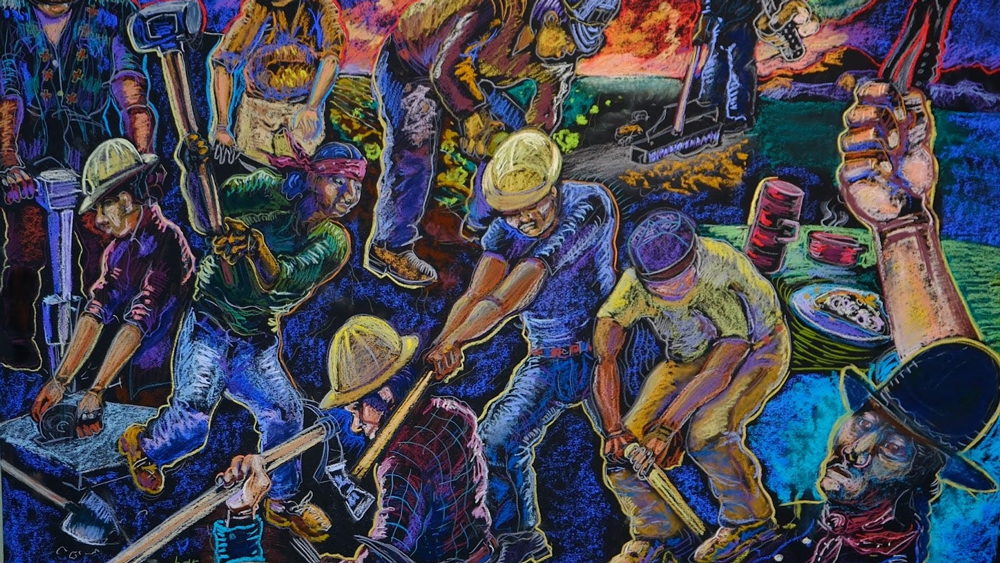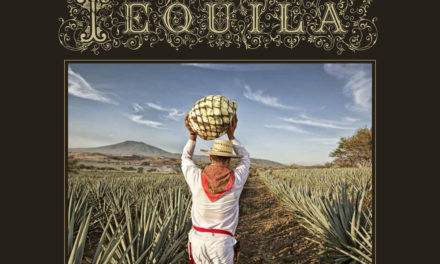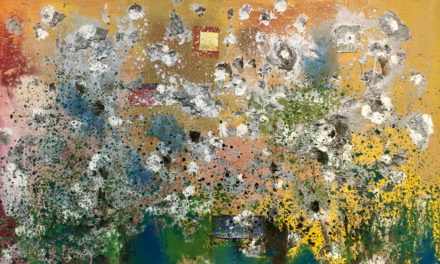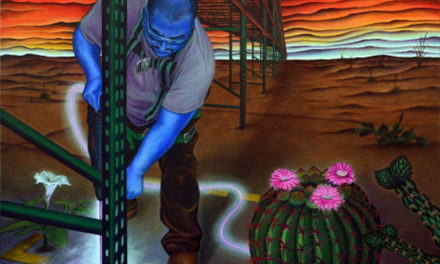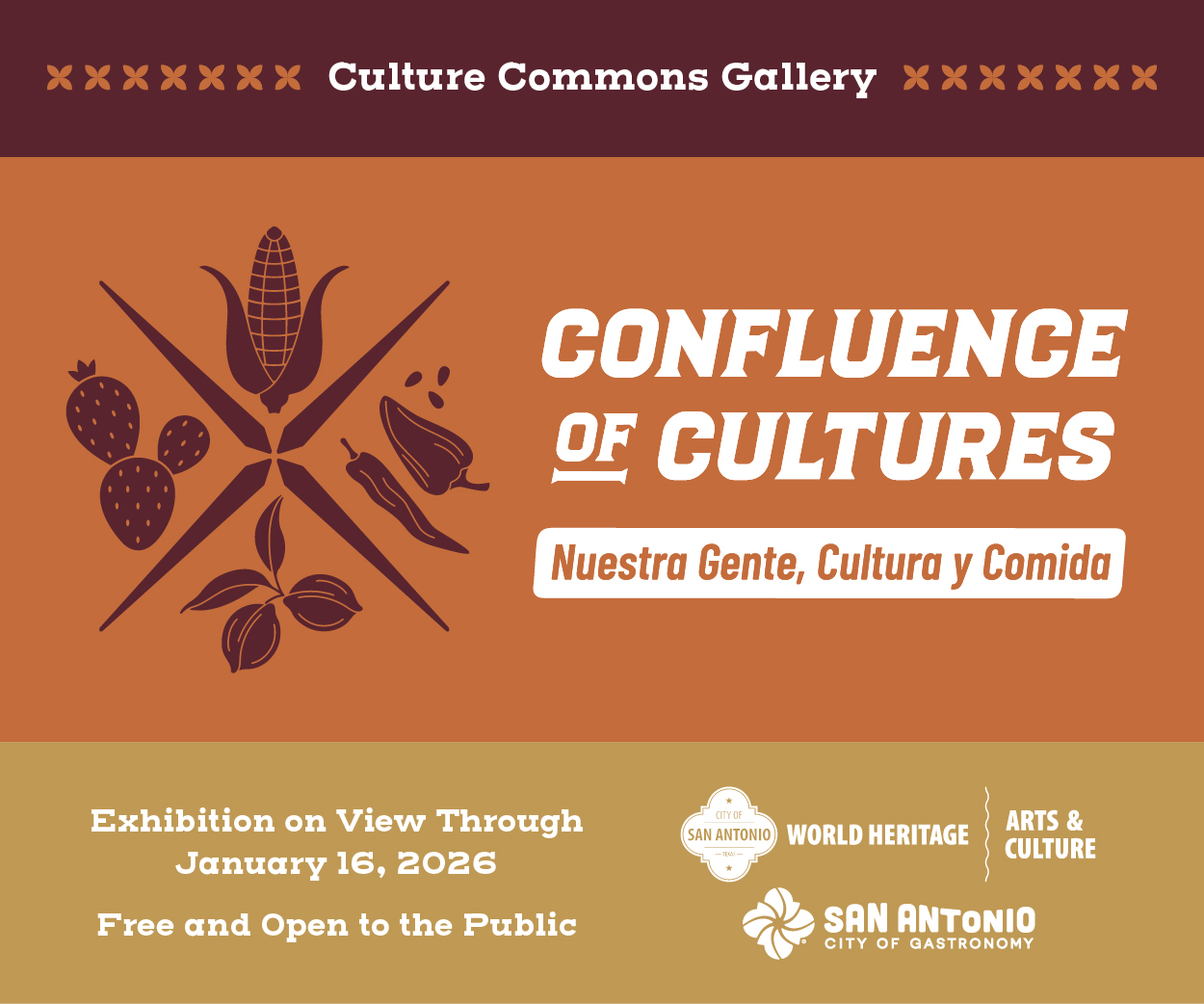San Antonio’s Guadalupe Book Store exhibit, “Refusing to Forget,” features Cris Escobar’s paintings and historical panels with photographs that chronicle segregation and discrimination against Mexicans and Mexican Americans in Texas. The exhibit ends this week after a successful opening in November 2023.
Escobar’s paintings, which capture the borderland experience past and present, are rich in narrative and color. An artist, educator, and community activist, Escobar draws and paints in his words, “What I have lived and experienced in my life.”
“El Midnight Vaquero,” a painting by Escobar, perhaps a wordplay reference to the 1969 Hollywood movie “Midnight Cowboy,” stands out as a powerful reminder that vaqueros were the first cowboys in the Americas. The first vaqueros in Texas worked tending cattle associated with the mission ranches of San Antonio, Texas in the early 1720s. The painting is also a tribute to Cris’s father, Ramon Escobar, an authentic Mexican vaquero.
The path to U.S. residency for Cris Escobar’s parents, Ramon and Maria Ascencion, began in the late 1930s. As a teenage vaquero in Coahuila, Mexico, Ramon Escobar looked north to the United States for better opportunities. He left Mexico at age 14 to work as a cowboy in South Dakota. The large ranches and farms in the upper West and Midwest recruited their best ranch and bracero [seasonal contract] farm workers from Central Mexico.
Many seasonal workers returned to Mexico after the work was done although others stayed in the United States. Escobar was determined to find steady work so that he and his family could remain permanently in the U.S.
Ramon Escobar later worked on another large ranch in Montana. A trusted worker, he was tasked to recruit additional vaqueros from his home state. He also brought his wife to the U.S. Ranch work was seasonal and the Escobar family worked in different midwestern states picking crops in the spring and summer. As a result of constant movement to migrant labor camps, Cris Escobar was born in Utah in 1958.
The Escobar family settled in Del Rio when Cris’s father found work in the building of the Amistad Dam. Construction work existed year-round, and Cris attended school in Del Rio where his teachers, as early as second
grade, took notice of his artistic talents and gave him art assignments.
After graduating from Del Rio High School, Cris Escobar attended St. Edward’s University in Austin on a Migrant Education scholarship. He completed an art degree at the University of Texas, El Paso but returned to Del Rio in 1983 after completing his studies at UTEP.
While attending St. Edward’s University, Escobar met Raul Valdez and Fidencio Duran, two muralists who influenced Escobar’s artistic development. Valdez moved to Del Rio to complete a series of murals in 1977-1978, and Escobar connected with him and began learning about muralism. In 1985, The Texas Commission of the Arts selected Duran and Escobar to paint several murals in Brownsville, Texas. For his commission, Escobar painted murals over ten months for the Brownsville School District.
In the late 1980s, Escobar began a teaching career in Del Rio, a vocation that extended to 2022. He moved to Pleasanton, Texas in 2023 to be close to his daughter and lives part of the year in Pleasanton and part in Del Rio. At the end of the school year on May 24, 2024, Escobar retired from teaching and now looks forward to painting full-time.
Escobar completed a giant 20×120 foot mural on a building on South Main Street in downtown Del Rio that honors different fields of professional sports figures– including the famed Mexican-American golf team from the San Felipe barrio that won a state championship in the 1950s. A movie based on this sports story, “The Long Game,” recently premiered nationally and was well-received.
The Guadalupe Cultural Center bookstore exhibit, “Life and Death on the Border 1910-1920,” provides a historical overview of the borderlands during the early 20th century when demographic and economic growth, massive immigration, violence, and political change defined life in South Texas.
The borderlands began to evolve dramatically with the arrival of the railroads connecting border towns to the rest of Texas and the U.S. By 1911, Texas had the most railroad mileage in the nation, a posture the state maintains today. Mexican immigrants represented the largest group of railroad workers, laying more than 6,000 miles of track across the state. The Border exhibit authors wrote: “Dozens of almost entirely Anglo towns sprung up along the railroad routes.” The growing number of
Anglo-border residents created new economies but also introduced segregation in housing, schools, and public places.
As these border towns grew, Mexican-American families with ancestral roots dating back to 1750 began to witness increasing conflict over land, cattle, water rights, and political dominance. When the Mexican Revolution broke out in 1910, the U.S. sided with corrupt Mexican political leaders who had followed Porfirio Diaz, one of the longest-serving dictators of Latin America.
Over the 1910-1920 decade of the Mexican Revolution, hundreds of thousands of lives were lost and more than a million Mexicans left their country seeking asylum in the U.S. The revolution pushed nativist Texans in border communities to engage in vigilantism and retaliation toward Mexicans. The exhibit authors noted that during this period, “Texas would witness and perpetrate some of the worst state-sanctioned racial violence in U.S. history.”
Border residents experienced a rise in White nativism and a falsified belief that black and brown people were racially inferior. Numerous border communities welcomed marches by the Ku Klux Klan. The border authors wrote: “[Mexican American] Soldiers who died in World War I were denied services at white funeral parlors and cemeteries.” Many border towns were segregated, often
by the railroad tracks that ran through the middle of town. Whites lived on one side of the tracks and Mexicans lived on the other. Mexicans were forbidden to visit white neighborhoods after sunset.
The Guadalupe Cultural Center exhibit recognizes the outstanding efforts of LULAC, a Latino organization that worked to end school segregation in South Texas. Two founders of LULAC, lawyer Jose Thomas Canales and educator J. Luz Saenz, are featured in the exhibit poster panels.
Saenz taught in South Texas schools for 40 years and helped raise funds to support the famous LULAC-backed desegregation suit against the Del Rio Independent School District often cited as the Salvatierra case of 1930. This case was the first legal challenge by Mexican Americans against school segregation in the U.S. The
exhibit authors noted, “Better education empowered Mexican American children to leave the fields and join the ranks of merchants, business owners, and voters.” I would add that education has also led to the preparation of gifted teachers and artists like Cris Escobar.
Cris Escobar’s Painted Memories and an Overview of U.S. – Mexico Border History
